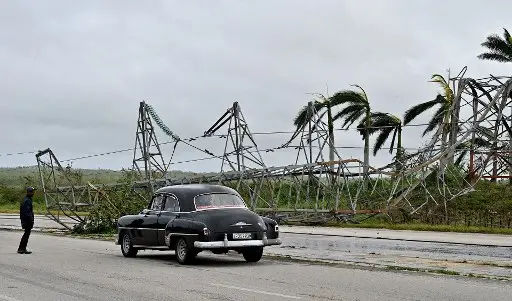HAVANA, Cuba (AFP) — After Hurricane Rafael struck Cuba earlier this week, much of the island was left in the dark, with power being restored only after two full days of outages. Authorities confirmed that electricity had been reconnected to most of the country, but many were still grappling with the aftermath.
As of Friday, 13 out of Cuba’s 15 provinces were back online, while efforts continued to restore power to two western regions. Havana, the capital with a population of around two million, was still facing widespread blackouts. Authorities reported that only about 17% of the city’s residents had their electricity back.
Rafael, a powerful Category 3 hurricane, caused widespread destruction, tearing off roofs, damaging infrastructure, and even ripping bleachers off a baseball stadium. The storm’s impact was made worse by Cuba’s ongoing power struggles, which have become a regular feature of the country’s economic challenges.
Just weeks earlier, a separate power plant failure had plunged the island into darkness for days. While the government confirmed no fatalities from the latest hurricane, nearly 250,000 people were evacuated from their homes to seek shelter in safer areas before Rafael’s arrival.
Cuba’s long-standing struggle with power shortages is a direct result of its broader economic crisis, which has deepened in recent years. The collapse of the Soviet Union in the 1990s, once a key financial supporter, has been a major factor in the country’s enduring energy challenges.
In the midst of these struggles, the United Nations General Assembly reiterated its call for the United States to lift the decades-long trade embargo, which many argue has exacerbated Cuba’s ongoing hardships.
This latest disaster serves as another stark reminder of the island’s fragile infrastructure, as residents continue to navigate the challenges posed by both natural disasters and systemic economic difficulties.






